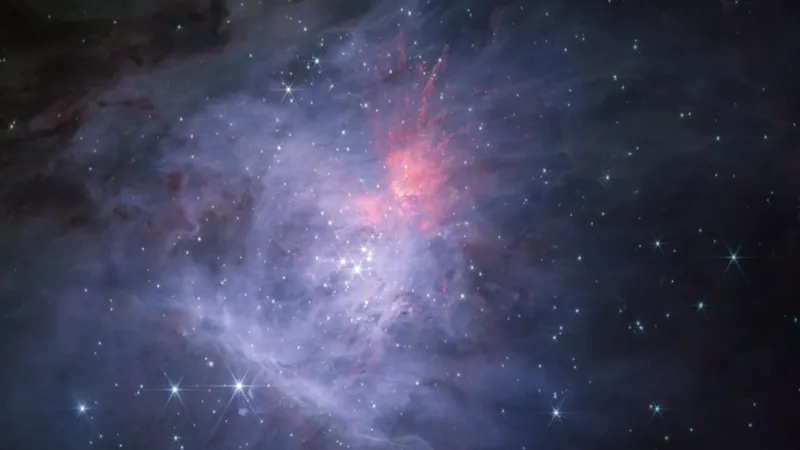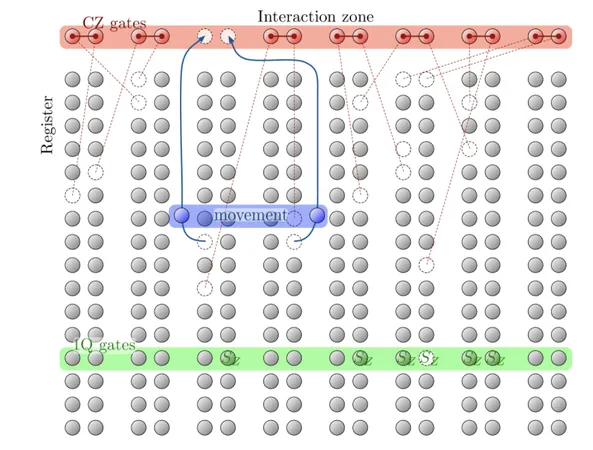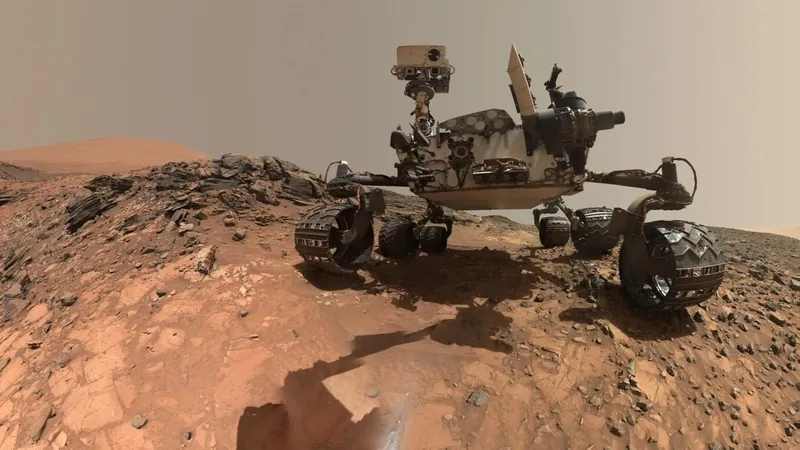
Unveiling the Secrets of Jupiter-Mass Binary Objects in the Orion Nebula: New Study Sheds Light on Their Formation
2024-11-11
Author: Jia
Introduction
Deep within the majestic Orion Nebula, a team of researchers has made significant strides toward unraveling the enigma of Jupiter-mass binary objects (JuMBOs)—one of astrophysics' most enduring mysteries.
Research Overview
In an illuminating study led by Dr. Richard Parker, alongside undergraduate student Jessica Diamond, a fresh theory on how these fascinating celestial objects form has emerged. Their findings are set to be published in The Astrophysical Journal, while an early version is available on the arXiv preprint server for fellow astronomers to scrutinize.
Recent Discoveries
The recent detection of JuMBOs in the Orion Nebula Cluster by the groundbreaking James Webb Space Telescope has intensified the discourse surrounding the origins of free-floating, planetary-mass entities in regions rich with star formation. These discoveries have reignited debates within the scientific community about how these peculiar celestial bodies come into existence.
Formation Theories
Typically, stars originate from the gravitational collapse of gases in space, while planets form from the surrounding disk of gas and dust. However, JuMBOs stand apart, as they represent planetary-mass objects that orbit one another within a binary system. Conventional planetary formation theories do not account for the existence of such systems, especially given the relatively low mass of JuMBOs compared to stars.
Innovative Theory: Photoerosion
So, how exactly do these enigmatic JuMBOs come to be? Dr. Parker and Diamond propose an innovative theory termed "photoerosion." Their research indicates that JuMBOs form similarly to stars, but their development is adversely affected by the powerful radiation emitted by nearby massive OB stars. This intense radiation barrage strips away hydrogen gas from the outer layers of the emerging JuMBOs—an effect aptly named photoerosion.
Revisiting Existing Theories
The work of Dr. Parker and Diamond revisits and refines an older theory about the formation of planetary-mass objects in proximity to significant stellar masses, taking into account new observations that suggest the majority of stars indeed form in binary configurations. This photoerosion mechanism offers a compelling explanation for the existence of JuMBOs, positing that the radiation from these massive stars interrupts the growth process of stellar binaries at an early stage.
Future Research Directions
While this new theory enhances our understanding of the formation of free-floating planetary masses, the fundamental origins and characteristics of JuMBOs continue to be a subject of extensive research. Ongoing studies and future observational campaigns will be pivotal in substantiating their existence and elucidating their role within the vast tapestry of the cosmos.
Conclusion
Stay tuned as scientists delve deeper into this mystery, potentially revealing the hidden life stories of these celestial twins! 🌌✨





 Brasil (PT)
Brasil (PT)
 Canada (EN)
Canada (EN)
 Chile (ES)
Chile (ES)
 España (ES)
España (ES)
 France (FR)
France (FR)
 Hong Kong (EN)
Hong Kong (EN)
 Italia (IT)
Italia (IT)
 日本 (JA)
日本 (JA)
 Magyarország (HU)
Magyarország (HU)
 Norge (NO)
Norge (NO)
 Polska (PL)
Polska (PL)
 Schweiz (DE)
Schweiz (DE)
 Singapore (EN)
Singapore (EN)
 Sverige (SV)
Sverige (SV)
 Suomi (FI)
Suomi (FI)
 Türkiye (TR)
Türkiye (TR)